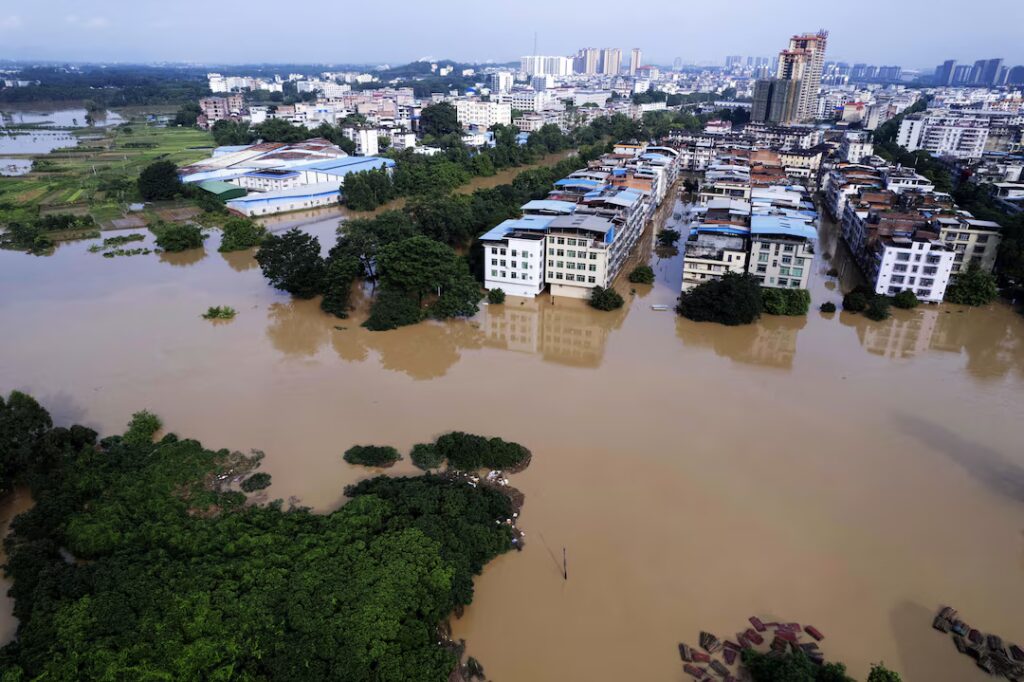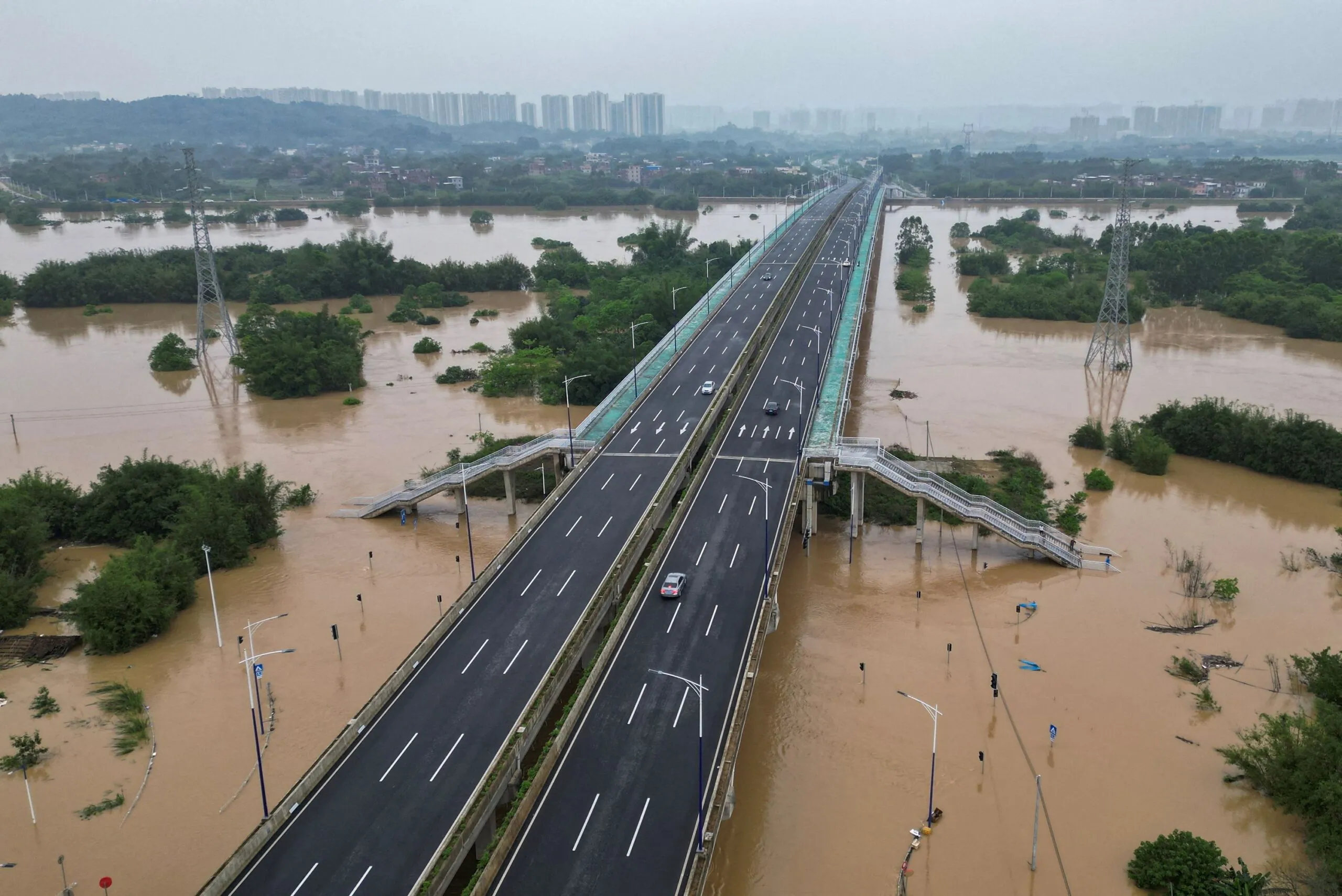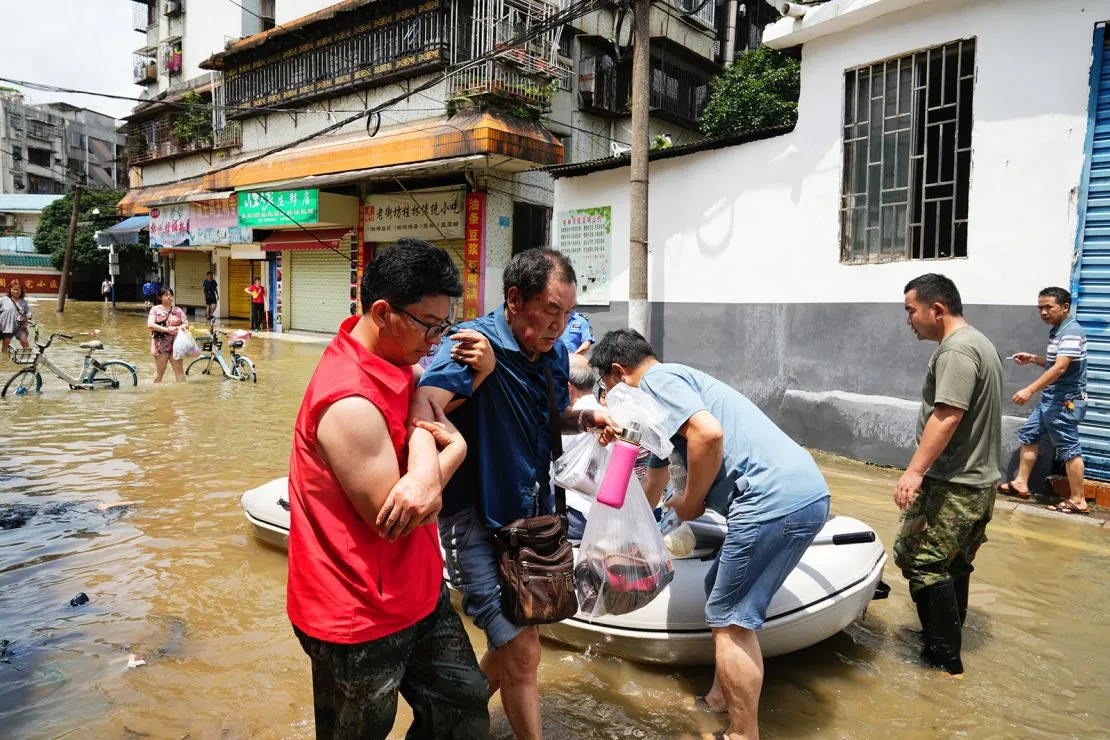Southern China is facing a relentless wave of disasters as floods, landslides, and a new tropical cyclone threaten millions of lives and livelihoods. The region is still recovering from the devastation left by Typhoon Wutip, which struck just two weeks ago, and now, another storm is bearing down—raising fears of even greater catastrophe.
typhoon Wutip, the first major storm of the 2025 season, made landfall on June 13 in Hainan before sweeping into Guangdong and Guangxi provinces. It brought winds gusting up to 128 kilometers per hour (80 mph), uprooting trees and knocking out power for thousands.
The storm dumped record rainfall, triggering widespread flooding that submerged cities, destroyed roads, and ruined crops.
In Zhaoqing city, Guangdong, floodwaters swamped streets and shopfronts, forcing rescuers to push stranded cars out of the water and use dinghies to evacuate trapped residents.
More than 183,000 people in Huaiji County alone were affected, with the city mobilizing over 10,000 rescue personnel. In Guangxi, footage showed rescue teams dragging rubber boats through knee-deep water, struggling to reach those in need.
“We’ve never seen rain like this,” said a resident from Rongjiang, Guizhou. “The water came so fast, we barely had time to grab our things. Cars were floating away, and the power went out everywhere.”
Landslides and Narrow Escapes

The relentless rain also triggered dangerous landslides. In Zhonghe village, western Guangdong, a landslide struck at 4 a.m. on June 15, but thanks to the quick action of a local woman who noticed warning signs, all 25 households (57 people) were evacuated just hours before disaster struck.
The landslide was large and shallow, channelizing before hitting the village—a reminder of how sudden and deadly these events can be.
“The landslide came roaring down the mountain. If we hadn’t left, who knows what would have happened?” said one of the evacuated villagers.
Floods Spread Across the South

The disaster did not stop with Wutip. On June 25, unusually heavy rains hit Rongjiang in Guizhou province, submerging half the city of 300,000 people.
Fast-rising floodwaters swept away cars, flooded underground garages and shopping malls, and damaged vital infrastructure, including the city’s power grid. Over 80,000 people were forced to flee their homes as the floods worsened.
Downstream in Guangxi, rivers swelled to more than nine meters (30 feet) above safe levels—as tall as a three-story building. “The river is still rising,” warned a local official. “We’re watching it very closely.”
The Chinese government has been quick to respond. On June 25, the National Development and Reform Commission allocated 100 million yuan (about $14 million) for Guizhou and another 100 million yuan for Guangdong and Hunan to support rescue and recovery efforts. Earlier, the central government had earmarked additional funds for emergency response in Hainan, Guangdong, and Guangxi.
“We are doing everything we can to keep people safe,” said a government spokesperson. “No one will be left behind.”
A New Storm Looms

As if the floods and landslides were not enough, meteorologists are now warning of a new tropical depression that could hit southern China as early as Thursday, June 26.
The storm is expected to make landfall somewhere between Hainan and Guangdong, bringing more rain and gales to already saturated regions.
“This new storm could bring even more rain and wind,” said a meteorologist from the National Meteorological Centre. “We are very worried about more flooding and damage.”
Why Is This Happening?
Scientists and officials are pointing to climate change as a key driver of these extreme weather events. “We are seeing more extreme weather events,” said a climate expert. “This is not normal, and it’s getting worse.”
Chinese officials warn that massive flooding could trigger unexpected disasters, such as dam breaks or landslides—so-called “black swan” events with potentially dire consequences.
The human toll of these disasters is mounting. At least five people died in the initial floods from Typhoon Wutip, and thousands more have been displaced.
In Hunan, more than 53,000 people were evacuated as torrential rain continued to fall, with some areas seeing more than 400 millimeters (16 inches) of rain in just a few days.
“We are strong, but we need help,” said a mother in Hunan, holding her child close. “We just want to go home and be safe.”
Quote of the Day
“The water came so fast, we barely had time to grab our things. Cars were floating away, and the power went out everywhere. We are strong, but we need help. We just want to go home and be safe.”
— Residents of Rongjiang, Guizhou, and Hunan, speaking about the floods and ongoing storms
What’s Next?
Millions of people in southern China are now living in fear of more floods and storms. Rescue teams are working around the clock to help those in danger, and the government is sending money and supplies to the hardest-hit areas. But with the new storm approaching, and rivers still swollen, the situation remains precarious.
Southern China is facing a double disaster—floods from Typhoon Wutip and a new storm on the way. The government is sending money and rescue teams, but the people are worried and exhausted. Scientists say climate change is making things worse, and everyone is praying for a break in the weather.
stay woke.stay tuned. stay with AKEWE NEWS